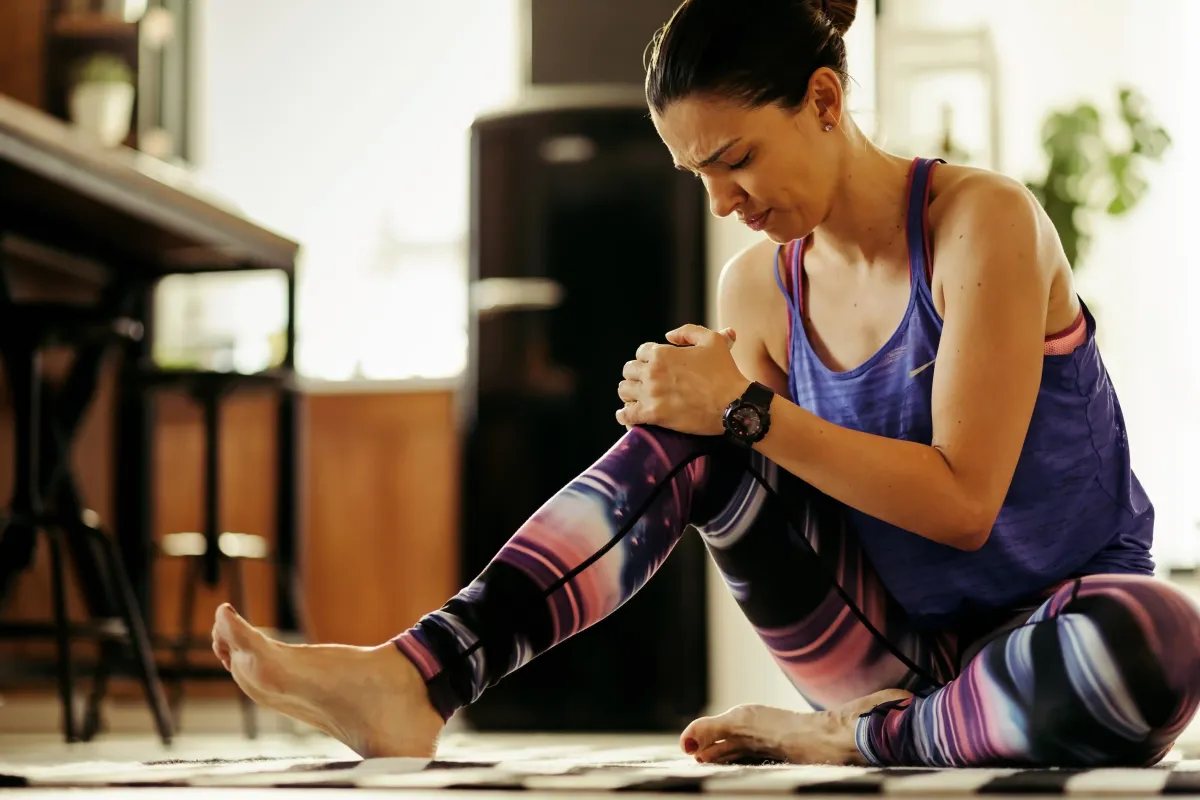Shin Splints Treatment in NYC
Manhattan Physical Therapy

What Are Shin Splints?
Shin splints, medically known as tibial stress syndrome, refer to pain along the lower leg caused by repeated stress on the shinbone and surrounding tissues. The condition is especially common among runners, dancers, and athletes who perform high-impact or repetitive leg movements. The tibia, or shinbone, runs from the knee to the ankle, and when overused, the tissues that attach to it can become irritated and inflamed.
This condition often develops gradually, beginning as mild discomfort that worsens with continued activity. Without proper care, the pain can progress and interfere with walking, running, or even daily activities.
What Types of Shin Splints Exist?
There are two main types of shin splints, depending on where the pain occurs:
Medial tibial stress syndrome (MTSS): This is the most common form. It causes tenderness or pain along the inner edge of the shinbone and is usually linked to inflammation of the muscles, tendons, and bone tissue surrounding the tibia.
Anterior tibial stress syndrome: This type affects the front portion of the shin. It often involves the muscles that lift the foot and can result from repetitive use or increased training intensity.
Both types share similar characteristics — pain that starts gradually, worsens with activity, and improves with rest — but the exact location and intensity can differ.
Source: Healthdirect
What Are the Symptoms of Shin Splints?
Shin splints typically cause a dull, aching pain in the lower leg. The discomfort may occur during or after exercise, particularly running or jumping. Common signs include:
Pain along the front or inner side of the shin
Tenderness or mild swelling in the affected area
Pain that worsens with movement and lessens with rest
Soreness to touch along the shinbone
What Causes Shin Splints?
Shin splints develop when repetitive stress overwhelms the muscles, tendons, and bone tissue around the tibia. The condition is often linked to overuse or biomechanical issues that increase strain on the lower leg. Common causes include:
A sudden increase in training frequency or intensity
High-impact activities such as running, jumping, or dancing
Flat feet or overpronation (inward rolling of the foot)
Uneven leg length or improper running mechanics
Weak calf or hip muscles
Hard or uneven running surfaces
Worn-out or unsupportive footwear
Research published in Sports Health and The Journal of Orthopaedic & Sports Physical Therapy supports that improper load management and lower limb muscle imbalances play major roles in shin splint development. Addressing these factors through physical therapy can significantly reduce pain and prevent recurrence.
How Is Shin Splint Diagnosis Handled?
When you arrive at our clinic in with concern for shin-splints, the first step is a careful physical-therapy assessment to confirm whether your symptoms align with Medial tibial stress syndrome (MTSS) or anterior tibial stress syndrome, and to rule out more serious conditions such as a stress fracture. A thorough evaluation typically includes:
A detailed history of your training habits, running surface, footwear, and any recent increases in load.
Palpation (hands-on examination) of the shinbones to identify tenderness along the inner edge (typical of MTSS) or along the front of the shin (anterior type).
Assessment of your foot mechanics (flat feet, over-pronation), leg-length differences, calf and hip muscle strength and flexibility, and running gait.
If there is reason to suspect a stress fracture — such as sharp focal pain, persistent symptoms despite conservative care, or changes on examination — referral may be made for imaging (X-ray, MRI) to confirm.
What Does Physical Therapy Treatment Involve?
Physical therapy for shin splints takes a structured, phased approach aimed at reducing pain, restoring healthy movement, and preventing recurrence. Key components include:
Phase 1: Pain Management & Load Modification
Initially, reducing high-impact activity (running, jumping) is important to allow inflammation around the tibia and associated tissues to settle.
Modalities such as ice, gentle soft-tissue mobilization, and manual therapy may be used to calm soreness and tightness in the calf, anterior tibialis, and other relevant muscles.
The therapist will guide you in cross-training alternatives (cycling, swimming, elliptical) to maintain cardiovascular fitness while offloading the shin.
At the same time, proper footwear and surface evaluation will be reviewed — e.g., worn-out shoes, too much hard-surface running.
Phase 2: Strengthening & Movement Correction
Focused exercises strengthen weak or under-used muscles around the hip, calf, foot, and core to ensure better support of the tibia during running.
Sample exercises include: heel drops (eccentric calf raises), toe-raises (to strengthen the anterior shin area), single-leg balance, hip-glute strengthening, and core stabilization.
Gait and biomechanics are addressed — for example, cadence training (increasing step-rate) to reduce tibial loading, or altering foot-strike pattern if appropriate.
Manual therapy (including soft-tissue mobilization along the shin and calf) can help break down adhesions and improve tissue mobility.
Phase 3: Return-to-Run & Prevention
When pain allows, you begin a structured re-entry into running — typically with a run/walk plan, gradually increasing load and monitoring symptoms.
The physical therapist will guide you on how to monitor for recurrence (i.e., shin soreness that persists beyond 24 h) and adjust training accordingly.
Education on training load progression (avoid jumping miles too fast), surface variation, footwear rotation, and proper warm-up/cool-down is included.
Long-term, the program will include maintenance exercises (hip/calf strength, mobility, running form drills) to reduce recurrence risk.
Community Insights on Shin Splints Recovery
Here are some quotes we got from Reddit discussions:
“One thing that fixed this issue for me was strengthening my tibialis anterior. Plop that bad boy on and dorsiflex the foot until it burns, then keep going."
“Tib-raises helped me a lot with shin splints!”
“This has helped me fix my IT band syndrome, shin splints, plantar fasciitis … For me, it has been miraculous … I’d been suffering from inner shin pain as long as I’d been running and when I finally saw a PT he showed me which muscle was likely causing the problem … I’m finally able to train hard without being sidelined by shin pain.”
“I’ve dealt with recurring shin splints for over a year and finally resigned to the fact that I need to see a physical therapist.”
“Weighted calf raises. Only thing that ‘cured’ me long term.”
Source: Reddit
When Should I See My Healthcare Provider?
You should contact your healthcare provider if your shin pain is severe, persists for more than a couple of weeks despite rest, or gradually worsens over time. Seek attention promptly if you notice swelling, redness, warmth, or unusual tenderness in your lower legs, as these may indicate an infection or a more serious condition such as a stress fracture.
If you’re dealing with persistent shin pain, don’t wait — schedule a consultation with our physical therapy specialist today to start a safe, personalized treatment plan.
What others are saying
Alexander Liu
"Everyone on the team at Manhattan Physical Therapy is super nice and caring. They were able to pretty quickly diagnose my knee and hip problems and immediately put me to work to reduce the pain.."
Henry Myerberg
"You're not just a patient when you come to the Manhattan Physical Therapy. You feel like family there. In particular, Erica with her colleagues John, Lidia and Joe not only fix and improve you physically, they make you feel welcomed and cared for.."
Hakyung Kim
"Everyone is so kind and helpful! my knee and hip pain have improved massively since starting Manhattan PT, highly recommend to anyone. special thanks to Bianca, Lidia, Joe, and John!"
Manhattan Physical Therapy
✆ Phone (appointments):
(212) 213-3480
Address: 385 5th Ave, Suite 503, New York, NY 10016

